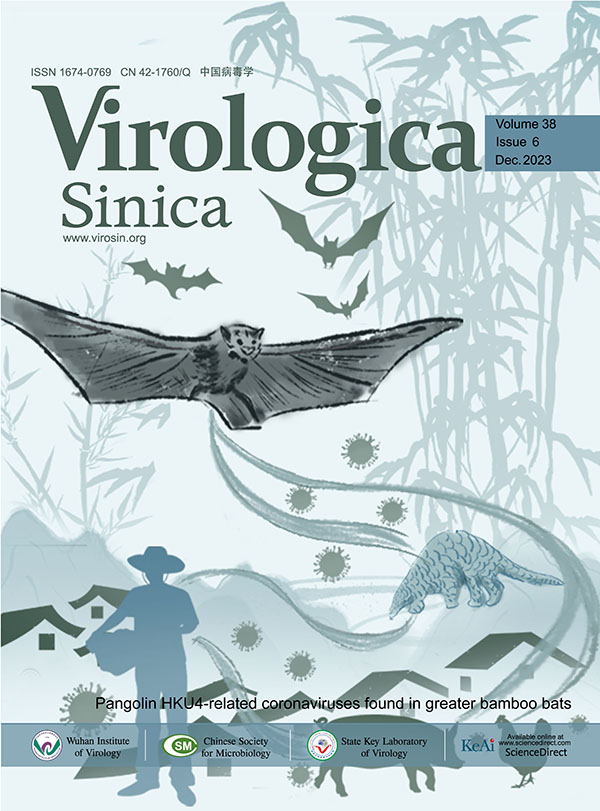-
Braun J, Sieper J. 2007. Ankylosing spondylitis. Lancet, 369: 1379-1390.
-
Chakravarty SD, Zabriskie JB, Gibofsky A. 2014. Acute rheumatic fever and streptococci: The quintessential pathogenic trigger of autoimmunity. Clin Rheumatol, 33: 893-901.
-
Cotmore SF, Agbandje-McKenna M, Chiorini JA, Mukha DV, Pintel DJ, Qiu J, Soderlund-Venermo M, Tattersall P, Tijssen P, Gatherer D, Davison AJ. 2014. The family parvoviridae. Arch Virol, 159: 1239-1247.
-
Crossfield SSR, Marzo-Ortega H, Kingsbury SR, Pujades-Rodriguez M, Conaghan PG. 2021. Changes in ankylosing spondylitis incidence, prevalence and time to diagnosis over two decades. RMD Open, 7: e001888.
-
Esse S, Mason KJ, Green AC, Warren RB. 2020. Melanoma risk in patients treated with biologic therapy for common inflammatory diseases: A systematic review and meta-analysis. JAMA Dermatol, 156: 787-794.
-
Favalli EG, Biggioggero M, Crotti C, Becciolini A, Raimondo MG, Meroni PL. 2019. Sex and management of rheumatoid arthritis. Clin Rev Allergy Immunol, 56: 333-345.
-
Galmiche S, Luong Nguyen LB, Tartour E, de Lamballerie X, Wittkop L, Loubet P, Launay O. 2022. Immunological and clinical efficacy of covid-19 vaccines in immunocompromised populations: A systematic review. Clin Microbiol Infect, 28: 163-177.
-
Gay L, Melenotte C, Lakbar I, Mezouar S, Devaux C, Raoult D, Bendiane MK, Leone M, Mège JL. 2021. Sexual dimorphism and gender in infectious diseases. Front Immunol, 12: 698121.
-
Goldman JD, Robinson PC, Uldrick TS, Ljungman P. 2021. Covid-19 in immunocompromised populations: Implications for prognosis and repurposing of immunotherapies. J Immunother Cancer, 9: e002630.
-
Hall BG. 2013. Building phylogenetic trees from molecular data with mega. Mol Biol Evol, 30: 1229-1235.
-
Hochberg MC. 1997. Updating the american college of rheumatology revised criteria for the classification of systemic lupus erythematosus. Arthritis Rheum, 40: 1725.
-
Kreuter A, Nasserani N, Tigges C, Oellig F, Silling S, Akgül B, Wieland U. 2018. Cutavirus infection in primary cutaneous b- and t-cell lymphoma. JAMA Dermatol, 154: 965-967.
-
Lewis SJ, Heaton KW. 1997. Stool form scale as a useful guide to intestinal transit time. Scand J Gastroenterol, 32: 920-924.
-
Li WX, Wei Y, Jiang Y, Liu YL, Ren L, Zhong YS, Ye LC, Zhu DX, Niu WX, Qin XY, Xu JM. 2014. Primary colonic melanoma presenting as ileocecal intussusception: Case report and literature review. World J Gastroenterol, 20: 9626-9630.
-
Mäntylä E, Kann M, Vihinen-Ranta M. 2017. Protoparvovirus knocking at the nuclear door. Viruses, 9: 286.
-
Mietzsch M, Pénzes JJ, Agbandje-McKenna M. 2019. Twenty-five years of structural parvovirology. Viruses, 11: 362.
-
Mohanraj U, Jokinen M, Thapa RR, Paloniemi M, Vesikari T, Lappalainen M, Tarkka E, Nora-Krukle Z, Vilmane A, Vettenranta K, Mangani C, Oikarinen S, Fan YM, Ashorn P, Vaisanen E, Soderlund-Venermo M. 2021. Human protoparvovirus DNA and igg in children and adults with and without respiratory or gastrointestinal infections. Viruses, 13: 483.
-
Mollerup S, Fridholm H, Vinner L, Kjartansdóttir KR, Friis-Nielsen J, Asplund M, Herrera JA, Steiniche T, Mourier T, Brunak S, Willerslev E, Izarzugaza JM, Hansen AJ, Nielsen LP. 2017. Cutavirus in cutaneous malignant melanoma. Emerg Infect Dis, 23: 363-365.
-
Otón T, Carmona L. 2019. The epidemiology of established rheumatoid arthritis. Best Pract Res Clin Rheumatol, 33: 101477.
-
Phan T, Nagaro K. 2020. Cutavirus: A newly discovered parvovirus on the rise. Infect Genet Evol, 80: 104175.
-
Phan TG, Dreno B, da Costa AC, Li L, Orlandi P, Deng X, Kapusinszky B, Siqueira J, Knol AC, Halary F, Dantal J, Alexander KA, Pesavento PA, Delwart E. 2016. A new protoparvovirus in human fecal samples and cutaneous t cell lymphomas (mycosis fungoides). Virology, 496: 299-305.
-
Söderlund-Venermo M. 2019. Emerging human parvoviruses: The rocky road to fame. Annu Rev Virol, 6: 71-91.
-
Salem JE, Manouchehri A, Moey M, Lebrun-Vignes B, Bastarache L, Pariente A, Gobert A, Spano JP, Balko JM, Bonaca MP, Roden DM, Johnson DB, Moslehi JJ. 2018. Cardiovascular toxicities associated with immune checkpoint inhibitors: An observational, retrospective, pharmacovigilance study. Lancet Oncol, 19: 1579-1589.
-
Smolen JS, Aletaha D, McInnes IB. 2016. Rheumatoid arthritis. Lancet, 388: 2023-2038.
-
Väisänen E, Fu Y, Hedman K, Söderlund-Venermo M. 2017. Human protoparvoviruses. Viruses, 9: 354.
-
Väisänen E, Fu Y, Koskenmies S, Fyhrquist N, Wang Y, Keinonen A, Mäkisalo H, Väkevä L, Pitkänen S, Ranki A, Hedman K, Söderlund-Venermo M. 2019. Cutavirus DNA in malignant and nonmalignant skin of cutaneous t-cell lymphoma and organ transplant patients but not of healthy adults. Clin Infect Dis, 68: 1904-1910.
-
Wieland U, Silling S, Hufbauer M, Mauch C, Zigrino P, Oellig F, Kreuter A, Akgül B. 2019. No evidence for role of cutavirus in malignant melanoma. Emerg Infect Dis, 25: 1600-16002.
-
Wolfe F, Michaud K. 2007. Biologic treatment of rheumatoid arthritis and the risk of malignancy: Analyses from a large us observational study. Arthritis Rheum, 56: 2886-2895.
-
Zanella MC, Cordey S, Laubscher F, Docquier M, Vieille G, Van Delden C, Braunersreuther V, Ta MK, Lobrinus JA, Masouridi-Levrat S, Chalandon Y, Kaiser L, Vu DL. 2021. Unmasking viral sequences by metagenomic next-generation sequencing in adult human blood samples during steroid-refractory/dependent graft-versus-host disease. Microbiome, 9: 28.
















 DownLoad:
DownLoad: